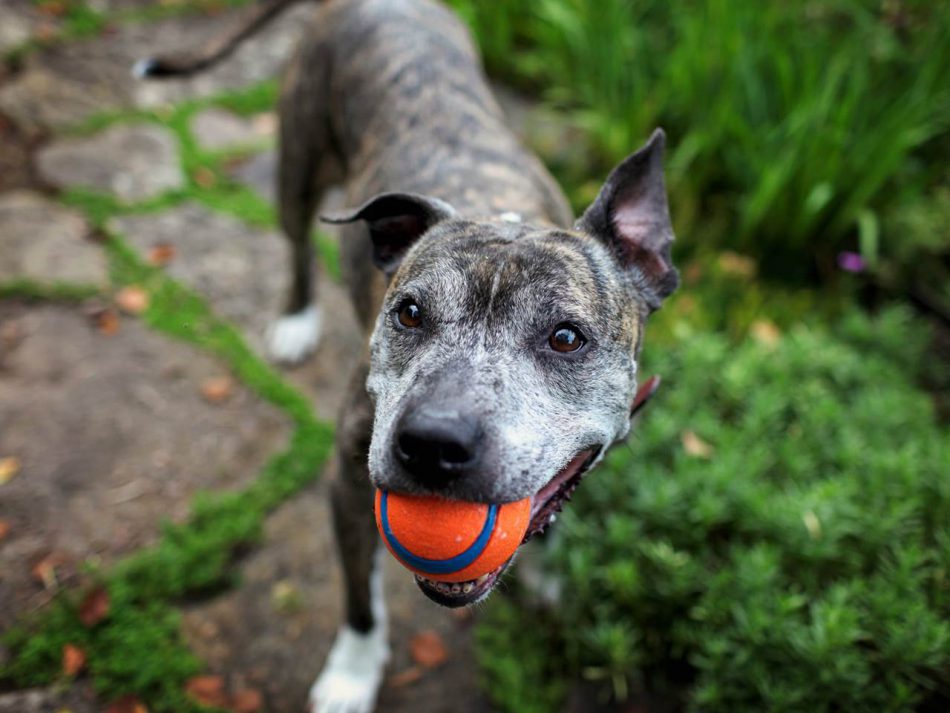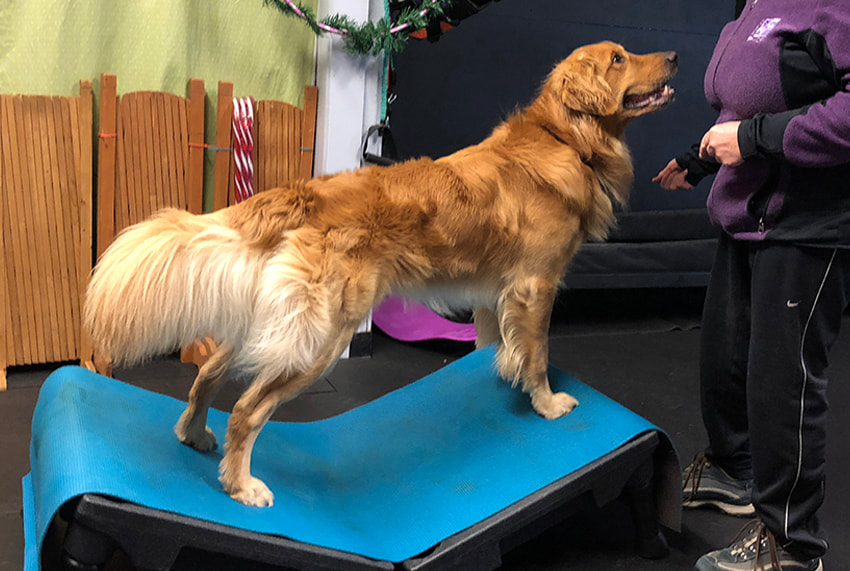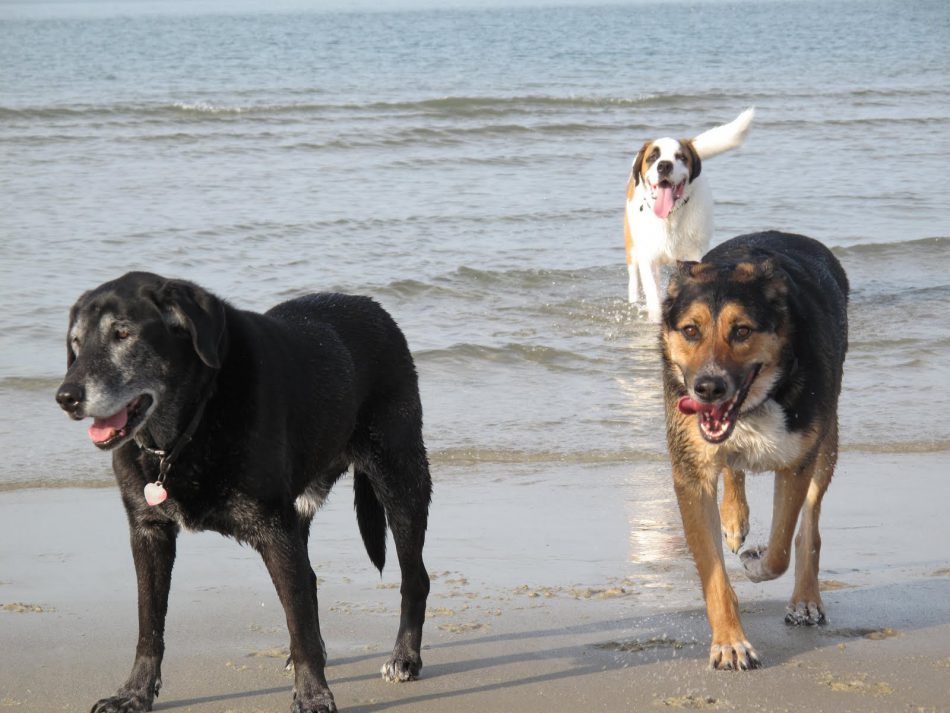No products in the cart.

This month we wish to highlight one of our favourite canine rehabilitation facilitators, Canine Balance by Sarah McFarland. Sarah focuses on providing easy and effective exercises to help keep your dogs happy and healthy for all stages of life. As our beloved canine companions grow into their twilight years, their exercise demands change, just like ours do. Sarah has created a simple exercise program for our senior dogs that will help keep them flexible and active.

It is important to keep exercising senior dogs to keep them mentally happy and physically healthy. Sure, your older dog may not be able to run the 5 km it used to but that doesn’t mean you stop altogether. Make some adjustments for your senior dog so they can still enjoy the benefits of exercise without causing discomfort or pain.
As dogs get older, their hind limbs become weaker and they may have issues like arthritis or other types of muscular and joint pain. Senior dogs benefit from more appropriate low impact activities like swimming, hydrotherapy and walking.
Senior Dog Exercise Program
Exercise your senior dog for shorter periods, 2-5 times per day, as moving more frequently is more helpful, i.e. keep them moving. It is also more effective to keep the exercise the same every day. For example: For a 10-year-old dog you could walk 15-20 minutes twice per day, however for a 14-year-old dog, you could walk 5-10 minutes, four times per day.
 Consider cross fit training, such as strength, balance, and flexibility exercises for the core and hind legs. Hill work, individual leg lifts, and one squat at the start and end of each walk is sufficient.
Consider cross fit training, such as strength, balance, and flexibility exercises for the core and hind legs. Hill work, individual leg lifts, and one squat at the start and end of each walk is sufficient.
Exercise plans should be adjusted to your dog. Your dog should feel better, move better, and have a better normal daily function when done with exercises. If they are more lame, sore after resting or change transitions or posture for the worse, following exercise, then adjust the plan to suit. We need to make allowances and adjust play, remembering to permit your dog to rest at times, during exercising.
Aids To Assist Daily Activities
Provide aids like ramps or steps to aid your senior dog getting in and out of vehicles, and on and off furniture. Harnesses are very useful for humans to help our senior dogs get up and down and get through their daily exercise routines. Remember to keep them warm or cool, away from stairs, and off slippery floors, too.
Just because your dog is older, it doesn’t mean they should slow down or be left at home because they can no longer get into the car. They can still work, compete, and can get onto furniture with some modifications by using aids.
Source: Senior Dog Exercise
To create a tailored exercise and wellness programme with Sarah McFarland, head to: Canine Balance

